 Facebook
Facebook
 X
X
 Instagram
Instagram
 TikTok
TikTok
 Youtube
Youtube
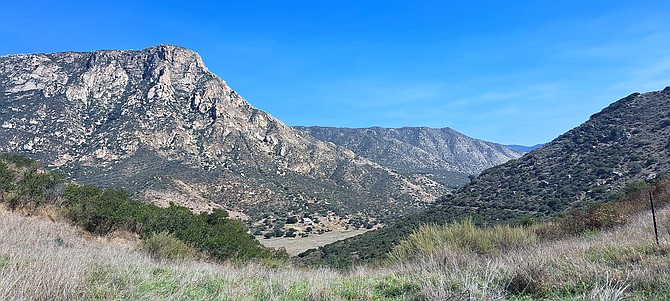
“You have arrived. Your destination is on the right,” said Google Maps matter-of-factly through my car speakers. I squinted out the windshield, doubt creasing my eyes. The sight before me was far from what I’d imagined: a desolate, boarded-up house, shrouded behind an uninviting fence. Beyond it, a yawning canyon unfurled its rugged spine. There was no hint of a trail or trailhead. However, along the canyon ridgeline, a strip of earth had been picked of its native vegetation for a construction project. A project that spilled into the road where a mustached man in a hard hat was waving me through a traffic stop. With nowhere to pull over and a white Mercedes breathing down my tailpipe, I surrendered to impulse and stepped on the accelerator to venture into uncharted territory, my GPS protesting noisily as I defied it.
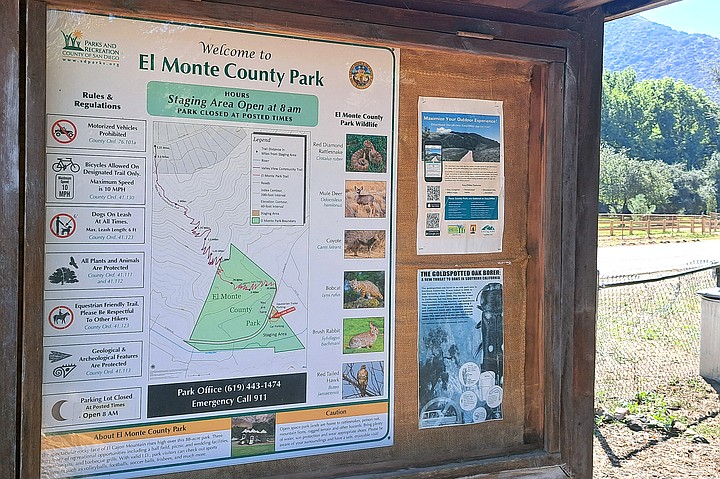
The winding, two lane road beckoned me into a narrow valley that slowly opened the further I traveled. After a few miles, I came across a verdant oasis, half-hidden by trees. This was the El Monte County Park. I left my car across the street in a dirt corral, at the center of which was an ancient oak tree. Its trunk, wide and stout, bore the weight of centuries.
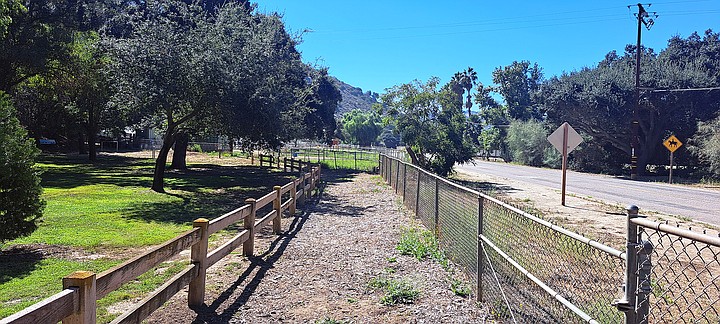
With my hiking boots fastened, I crossed the road and set forth along the El Monte Park Trail as it skirted around the park. The park was well groomed and gnarled oaks with thick, drooping branches stained the grass dark green with shade. It was clear the land was old, full of long forgotten memories.
The trail led me to a sign that greeted travelers with the news that the El Monte Flume Trail, where Google had brought me, was closed for construction. Instead, I could continue on the current trail as it climbed up the valley wall. I began my ascent, following a series of switchbacks. Lizards scurried away from me, grasshoppers leaped off the path, and butterflies danced in the wind as it brushed past me.
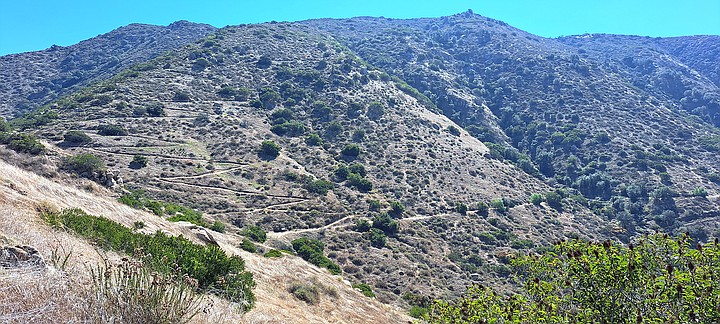
The switchbacks were partially shaded by toyon, and every turn up the path brought a change in scenery. On the third switchback, a horse whinnied in the valley. On the fifth, my eyes alighted on what looked like a family spanning three generations, savoring their lunch under a rustic gazebo. On the eighth, a gentle breeze rolled over the hill, bearing the unmistakable scent of earth and manure. There was a warmth in the valley. Not a dry, scorching heat that parches the land and stifles life, nor a muggy, suffocating humidity that weighs everything down. This was a slow, deliberate warmth that comes from generations of tilling and nurturing the soil.
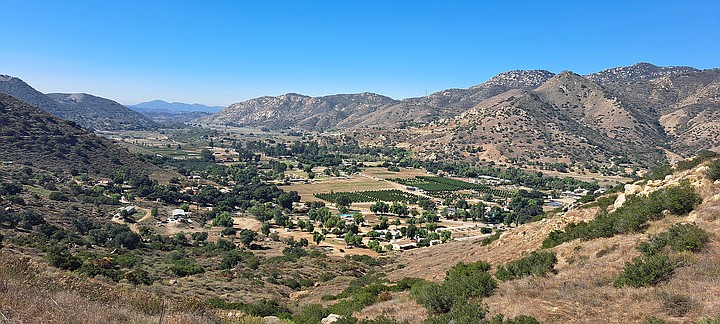
As I climbed, I couldn’t help but be struck by the rustic character of the community below. Here was a land that bore witness to the labor of hardworking folks. Their homes had been sculpted to mirror their spirit. And towering above it all, as if granting divine approval, rose El Cajon Mountain. It was a stupendous sight.
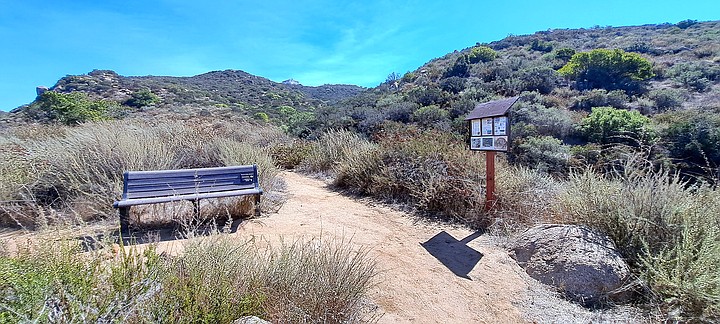
The afternoon dragged on as my feet traced the winding switchbacks to the summit, where a bench and interpretive sign had been placed. Behind the bench, the trail continued climbing, so I kept walking. After a minute or so, I lifted my sticky face toward the horizon, expecting to see the trail disappear into a thicket of chaparral. To my surprise, there, crouching between the mountain’s shoulders, was a stubby yellow house with a low-pitched roof. So out of place it seemed that I nearly expected the structure to retreat into the earth like a groundhog or dive into the brush like a rabbit. Instead, it did nothing. Unstirred by my presence, I continued along the meandering trail until another house came into view.
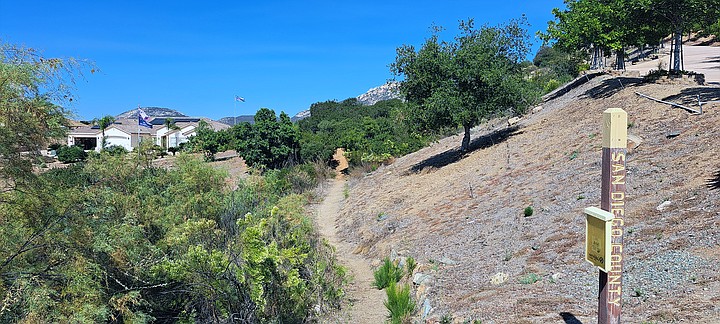
At first glance, it appeared to be a large, stately home. But as I got closer and looked longer, it seemed less dignified. A row of stumpy palm trees separated the chaparral canyon from the property line and a cluster of taller palm trees cast their shadows over gray dirt. The backyard was otherwise sterile and without any signs of life. Extending from either side of the house ran a concrete walkway that connected in the middle of the backyard in a half ring. Built into the walkway were two gazebos, each with a table and seats, and at the crown where the walkway met was a firepit with a ring of chairs.
The trail ran alongside the house, giving me a full profile of the property. Not wanting to be a creep, I kept my eyes on the path ahead of me until it came to an end on the side of a paved road. The trailhead was marked by nothing more than a wooden post sticking out of the ground near a yellow fire hydrant. There was no place to park along the road, nor was there a sidewalk, and I wondered how long it had been since the trailhead had last seen a human face.
Stepping over a guardrail, I crossed the street and saw that I was at the top of an opulent neighborhood that unfolded before me down a gently sloping hill that was bound by one long street. Many of these homes were beautiful and well-maintained.
Ready to return to the warm valley behind me, I spun around to cross the road again when something caught my eye and I paused. Flapping in the breeze above the home I’d seen on my way in was a blue flag with the name “TRUMP” stamped across it in lifeless letters. Two similar flags fluttered alongside it. An American flag was nowhere to be seen. Sweat stung my eyes and a bitterness welled in my throat as the flags, with their sterile colors, obscured the rugged face of El Cajon Mountain behind it. The arrogance was grating, and it felt as if someone had drawn over a Monet with a crayon.
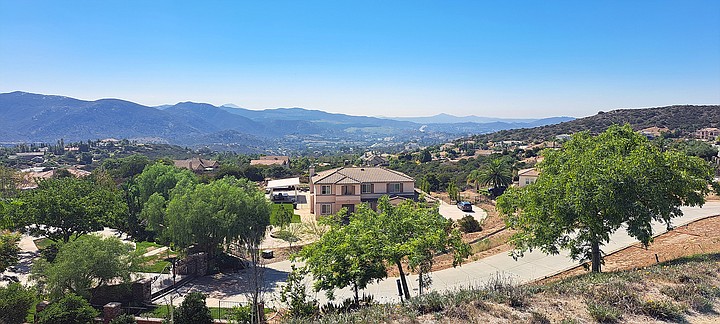
With a sigh, I took one final look at the neighborhood below. In the golden light of the California sun, the homes looked not like manors, villas, or chateaus, but squat structures that had sprouted like weeds atop a concrete island. Branching off from these islands were long, curling driveways, bleached bone-white, which stretched out like the lines in a poor man's palm. But these lines traced a path to lives etched not with hardship and labor, but grandeur and privilege. These were not homes born of necessity but from the very soul of desolation itself. Nor were the sorry souls who lived here bound together by shared struggles. Instead, they gripped the land like thirsty ticks and drank its natural beauty until the earth had been scarred and all that remained were walled gardens separated by a wasteland.
As these personal feelings settled on me, I no longer felt welcomed in this lofty land. Instead, I felt like a barbarian who had blindly stumbled before the gates of Rome. Some time later, as I fled down the mountain, my mood softened, like gathering storm clouds relenting to a gentle drizzle. Looming before me in the warm sun stood El Cajon Mountain, and as I regarded it, a quiet chuckle escaped my lips as the distant sentinel, that ancient granite guardian, remained unperturbed by my presence and the shabby flags that waved before it. The mountain had borne witness to the ebb and flow of countless generations, each believing its fleeting moment to be the center of all existence, and it would continue to do so.
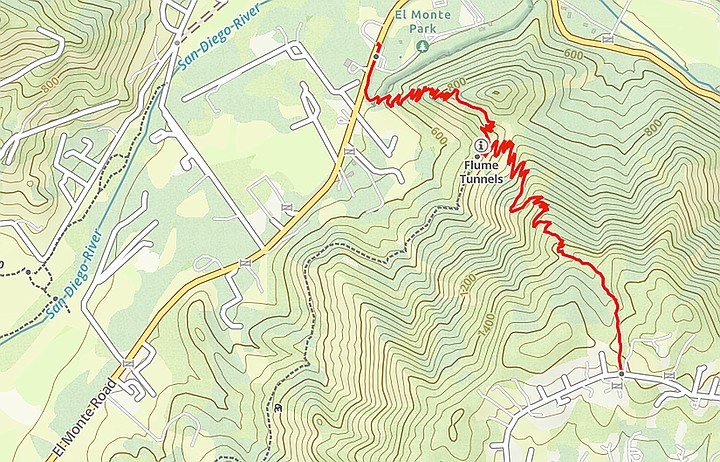


“You have arrived. Your destination is on the right,” said Google Maps matter-of-factly through my car speakers. I squinted out the windshield, doubt creasing my eyes. The sight before me was far from what I’d imagined: a desolate, boarded-up house, shrouded behind an uninviting fence. Beyond it, a yawning canyon unfurled its rugged spine. There was no hint of a trail or trailhead. However, along the canyon ridgeline, a strip of earth had been picked of its native vegetation for a construction project. A project that spilled into the road where a mustached man in a hard hat was waving me through a traffic stop. With nowhere to pull over and a white Mercedes breathing down my tailpipe, I surrendered to impulse and stepped on the accelerator to venture into uncharted territory, my GPS protesting noisily as I defied it.

The winding, two lane road beckoned me into a narrow valley that slowly opened the further I traveled. After a few miles, I came across a verdant oasis, half-hidden by trees. This was the El Monte County Park. I left my car across the street in a dirt corral, at the center of which was an ancient oak tree. Its trunk, wide and stout, bore the weight of centuries.

With my hiking boots fastened, I crossed the road and set forth along the El Monte Park Trail as it skirted around the park. The park was well groomed and gnarled oaks with thick, drooping branches stained the grass dark green with shade. It was clear the land was old, full of long forgotten memories.
The trail led me to a sign that greeted travelers with the news that the El Monte Flume Trail, where Google had brought me, was closed for construction. Instead, I could continue on the current trail as it climbed up the valley wall. I began my ascent, following a series of switchbacks. Lizards scurried away from me, grasshoppers leaped off the path, and butterflies danced in the wind as it brushed past me.

The switchbacks were partially shaded by toyon, and every turn up the path brought a change in scenery. On the third switchback, a horse whinnied in the valley. On the fifth, my eyes alighted on what looked like a family spanning three generations, savoring their lunch under a rustic gazebo. On the eighth, a gentle breeze rolled over the hill, bearing the unmistakable scent of earth and manure. There was a warmth in the valley. Not a dry, scorching heat that parches the land and stifles life, nor a muggy, suffocating humidity that weighs everything down. This was a slow, deliberate warmth that comes from generations of tilling and nurturing the soil.

As I climbed, I couldn’t help but be struck by the rustic character of the community below. Here was a land that bore witness to the labor of hardworking folks. Their homes had been sculpted to mirror their spirit. And towering above it all, as if granting divine approval, rose El Cajon Mountain. It was a stupendous sight.

The afternoon dragged on as my feet traced the winding switchbacks to the summit, where a bench and interpretive sign had been placed. Behind the bench, the trail continued climbing, so I kept walking. After a minute or so, I lifted my sticky face toward the horizon, expecting to see the trail disappear into a thicket of chaparral. To my surprise, there, crouching between the mountain’s shoulders, was a stubby yellow house with a low-pitched roof. So out of place it seemed that I nearly expected the structure to retreat into the earth like a groundhog or dive into the brush like a rabbit. Instead, it did nothing. Unstirred by my presence, I continued along the meandering trail until another house came into view.

At first glance, it appeared to be a large, stately home. But as I got closer and looked longer, it seemed less dignified. A row of stumpy palm trees separated the chaparral canyon from the property line and a cluster of taller palm trees cast their shadows over gray dirt. The backyard was otherwise sterile and without any signs of life. Extending from either side of the house ran a concrete walkway that connected in the middle of the backyard in a half ring. Built into the walkway were two gazebos, each with a table and seats, and at the crown where the walkway met was a firepit with a ring of chairs.
The trail ran alongside the house, giving me a full profile of the property. Not wanting to be a creep, I kept my eyes on the path ahead of me until it came to an end on the side of a paved road. The trailhead was marked by nothing more than a wooden post sticking out of the ground near a yellow fire hydrant. There was no place to park along the road, nor was there a sidewalk, and I wondered how long it had been since the trailhead had last seen a human face.
Stepping over a guardrail, I crossed the street and saw that I was at the top of an opulent neighborhood that unfolded before me down a gently sloping hill that was bound by one long street. Many of these homes were beautiful and well-maintained.
Ready to return to the warm valley behind me, I spun around to cross the road again when something caught my eye and I paused. Flapping in the breeze above the home I’d seen on my way in was a blue flag with the name “TRUMP” stamped across it in lifeless letters. Two similar flags fluttered alongside it. An American flag was nowhere to be seen. Sweat stung my eyes and a bitterness welled in my throat as the flags, with their sterile colors, obscured the rugged face of El Cajon Mountain behind it. The arrogance was grating, and it felt as if someone had drawn over a Monet with a crayon.

With a sigh, I took one final look at the neighborhood below. In the golden light of the California sun, the homes looked not like manors, villas, or chateaus, but squat structures that had sprouted like weeds atop a concrete island. Branching off from these islands were long, curling driveways, bleached bone-white, which stretched out like the lines in a poor man's palm. But these lines traced a path to lives etched not with hardship and labor, but grandeur and privilege. These were not homes born of necessity but from the very soul of desolation itself. Nor were the sorry souls who lived here bound together by shared struggles. Instead, they gripped the land like thirsty ticks and drank its natural beauty until the earth had been scarred and all that remained were walled gardens separated by a wasteland.
As these personal feelings settled on me, I no longer felt welcomed in this lofty land. Instead, I felt like a barbarian who had blindly stumbled before the gates of Rome. Some time later, as I fled down the mountain, my mood softened, like gathering storm clouds relenting to a gentle drizzle. Looming before me in the warm sun stood El Cajon Mountain, and as I regarded it, a quiet chuckle escaped my lips as the distant sentinel, that ancient granite guardian, remained unperturbed by my presence and the shabby flags that waved before it. The mountain had borne witness to the ebb and flow of countless generations, each believing its fleeting moment to be the center of all existence, and it would continue to do so.
